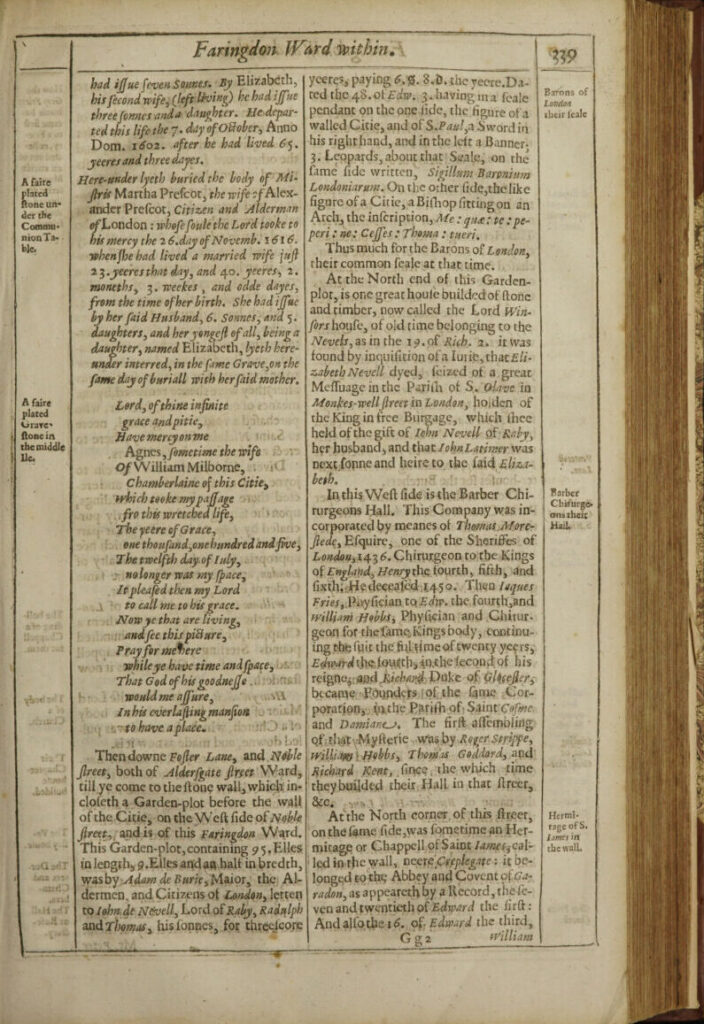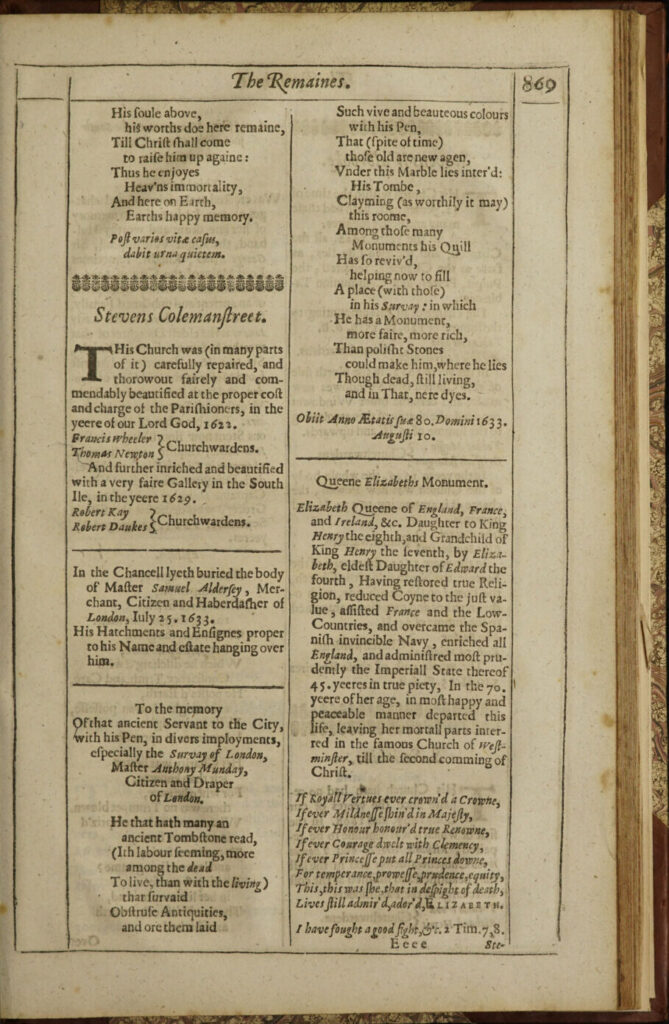
On 6 February 1633/4 the Company’s Court Minutes recorded that ‘Anthony Mondeys widd p’nted to this Court a Booke called The Surveigh of London beinge in folio and newlie printed.’
The widow in question was Gillian Munday, second wife of the prolific Anthony Munday (1553–1633), actor, spy, poet, translator, pamphleteer and writer of plays and pageants. Between 1605–23 he wrote several pageants performed in celebration of the Lord Mayor of London’s inauguration into office. The book Gillian presented to the Court was Anthony Munday’s second revised and expanded edition of his friend John Stow’s 1598 Survey of London.
Anthony Munday regularly sought patronage from City institutions and wealthy individuals. In 1603 his attentions had turned to the Company with his translation from French of François Citois’ ‘A true and Admirable Historie, of a Mayden of Consolens,’ a text concerning a girl reported to have survived three years without food and drink. He dedicated the work:
“To the Worshipfull, M. Thomas Thorney, Maister. M. VVilliam Martin, M. Edward Rodes, and M. Thomas Martin: Gouernours of the misterie and cominaltie of the Barber Chirurgians. And to the whole Assistants of the clothing happie successe in all their actions most hartily wished.”
The dedication went on to conclude “I remaine yours in any more serious imployment.”
Although he sought and received payments from a number of Livery companies for his texts, Munday’s wide-ranging activities appear not to have brought him lasting wealth and his 1629 will, indicates that “whatsoever I enjoye in this world is whollie my deare and loveinge wifes, as being at the first her owne : And I fayleinge of such fortunes (amountinge to Fortie or fiftie poundes yearlie)…”
After his death in August 1633 Gillian Munday received ten pounds from the Court of Aldermen for the posthumous printing of her husband’s second edition of Stow’s Survey, and presented it to a number of companies. From the Company of Barbers and Surgeons it’s recorded that she received 30 shillings for the book.
Anthony Munday’s epitaph in St Stephen, Coleman Street, was destroyed in the Great Fire, and survives only in survives only in the 1633 Survey of London.
Further reading:
Anthony Munday and civic culture : theatre, history, and power in early modern London, 1580-1633, Tracy Hill, (2004), available to read online here.
The survey of London: contayning the orignall, increase, moderne estate, and government of that city, methodically set downe, John Stow, additions by Anthony Munday, Henry Dyson, and others, (1633), available to read online here.
A true and admirable historie, of a mayden of Confolens, François Citois, translated by Anthony Munday (1603) available to read online here.
The will of Anthony Munday, in Notes and Queries, 11 s. ix. MAR. 7 Mar 1914, available to read online here.
A survey of London, written in the year 1598, New ed., with illustrations / ed. by William J. Thoms (1876) available to read in the Barbers’ Library.


